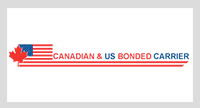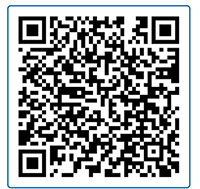Canadian and US Bonded Carrier

What is a Bonded Carrier?
Bonded carriers can bring a load of goods past the port of entry into Canada to an authorized location without customs release. They can do this because they were required to post financial security for $5000 to $25,000 with the Canada Border Services Agency (CBSA).
The Benefits of Bonded Carriers
Bonded carriers can:
- Move goods to an inland CBSA office (not located at the border) to have the shipment released;
- Move goods “in transit” through Canada. The bonded carrier uses Canada as a corridor by starting from a point outside Canada and then transiting through Canada to another point outside Canada. A release by CBSA is not required;
- Apply to the Customs Self Assessment Program and the Free and Secure Trade (FAST) Program.
Limitations of Non-Bonded Carriers
A non-bonded carrier must have the shipment they are carrying released at the first point of arrival (i.e., the border).
How to Become a Bonded or Non-bonded Carrier
Now that we understand what a bonded carrier can do, lets take a look at how to become one. The first step to becoming a bonded carrier is to obtain a carrier code from CBSA. This has been a requirement for commercial carriers since April 1, 2011.
A carrier code is a four-character unique identifier provided by CBSA to identify the carrier. There is a limit of one carrier code per legal company and per mode of transport.
Before CBSA issues a carrier code, they will first assess eligibility. For CBSA a carrier is a person involved in international commercial transportation who operates a conveyance used to transport specified goods to or from Canada. Additionally, to operate a conveyance means to have legal custody and control of the conveyance.
“Legal custody” means you are the owner, lessee, charterer, or mortgagor. “Specified goods” means commercial goods or any other goods transported into Canada for a fee.
How to Become a Bonded Carrier
The process to become a bonded carrier is more in-depth than the non-bonded application. This is because carriers must work with an approved surety company to initiate the bond application process. Again, the carrier must post financial security of $5,000 – $25,000. These applications must include company financials due to a review process.
Wee recommend that carriers review the CBSA Guidelines: Highway Carrier Code Application Process on the CBSA website as it is a clear guide. As a result of a carrier submitting a properly completed application with all applicable documentation, the carrier should receive their bonded carrier code within 3 business days. CBSA reviews applications on a first come first serve basis and “rush” requests are not permitted.
We can help you become a bonded carrier. Contact us for more information.
Carrier Bond Applications


There are many benefits to becoming a bonded carrier. ABS SafeCom is specialized for this , who works with an approved Surety Company for all bond applications. The process take approximately 4 weeks and you will need to provide company financials, proof ownership documentation and a number of applications would need completion. If you are interested in becoming a bonded carrier, we can assist every step of the way. Please contact us to speak with our Carrier Relations Specialist today.
Barcode Labels
Once the bonded or non-bonded carrier code application is approved, the carrier must obtain barcode labels. These labels display their bonded carrier code. Upon receiving a carrier code, carriers will have 30 days to obtain bar coded labels. Failing to have these upon arrival at the border can result in an administrative penalty of $1000
We can Print your barcode labels! Click here to Contact us for more information.









